The roots of evolutionist thought go back as far as antiquity as a dogmatic belief attempting to deny the fact of creation. Most of the pagan philosophers in ancient Greece defended the idea of evolution. When we take a look at the history of philosophy we see that the idea of evolution constitutes the backbone of many pagan philosophies.
However, it is not this ancient pagan philosophy, but faith in Allah which has played a stimulating role in the birth and development of modern science. Most of the people who pioneered modern science believed in the existence of Allah; and while studying science, they sought to discover the universe Allah has created and to perceive His laws and the details in His creation. Astronomers such as Copernicus, Keppler, and Galileo; the father of paleontology, Cuvier; the pioneer of botany and zoology, Linnaeus; and Isaac Newton, who is referred to as the "greatest scientist who ever lived", all studied science believing not only in the existence of Allah but also that the whole universe came into being as a result of His creation.6 Albert Einstein, considered to be the greatest genius of our age, was another devout scientist who believed in Allah and stated thus; "I cannot conceive of a genuine scientist without that profound faith. The situation may be expressed by an image: science without religion is lame."7
One of the founders of modern physics, German physician Max Planck said: "Anybody who has been seriously engaged in scientific work of any kind realizes that over the entrance to the gates of the temple of science are written the words: Ye must have faith. It is a quality which the scientist cannot dispense with." 8
The theory of evolution is the outcome of the materialist philosophy that surfaced with the reawakening of ancient materialistic philosophies and became widespread in the 19th century. As we have indicated before, materialism seeks to explain nature through purely material factors. Since it denies creation right from the start, it asserts that every thing, whether animate or inanimate, has appeared without an act of creation but rather as a result of a coincidence that then acquired a condition of order. The human mind however is so structured as to comprehend the existence of an organising will wherever it sees order. Materialistic philosophy, which is contrary to this very basic characteristic of the human mind, produced "the theory of evolution" in the middle of the 19th century.
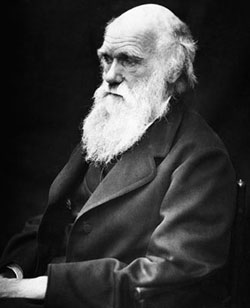 |
Charles Darwin |
The person who put forward the theory of evolution the way it is defended today, was an amateur English naturalist, Charles Robert Darwin.
Darwin had never undergone a formal education in biology. He took only an amateur interest in the subject of nature and living things. His interest spurred him to voluntarily join an expedition on board a ship named H.M.S. Beagle that set out from England in 1832 and travelled around different regions of the world for five years. Young Darwin was greatly impressed by various living species, especially by certain finches that he saw in the Galapagos Islands. He thought that the variations in their beaks were caused by their adaptation to their habitat. With this idea in mind, he supposed that the origin of life and species lay in the concept of "adaptation to the environment." Darwin opposed to fact that Allah created different living species separately, suggesting that they rather came from a common ancestor and became differentiated from each other as a result of natural conditions.
Darwin's hypothesis was not based on any scientific discovery or experiment; in time however he turned it into a pretentious theory with the support and encouragement he received from the widely known materialist biologists of his time. The idea was that the individuals that adapted to the habitat in the best way transferred their qualities to subsequent generations; these advantageous qualities accumulated in time and transformed the individual into a species totally different from its ancestors.
The origin of these "advantageous qualities" was unknown at the time.) According to Darwin, man was the most developed outcome of this imaginary mechanism.
Darwin called this process "evolution by natural selection". He thought he had found the "origin of species": the origin of one species was another species. He published these views in his book titled The Origin of Species, By Means of Natural Selection in 1859.
Darwin was well aware that his theory faced lots of problems. He confessed these in his book in the chapter "Difficulties on Theory". These difficulties primarily consisted of the fossil record, complex organs of living things that could not possibly be explained by coincidence (e.g. the eye), and the instincts of living beings. Darwin hoped that these difficulties would be overcome by new discoveries; yet this did not stop him from coming up with a number of very inadequate explanations for some. The American physicist Lipson made the following comment on the "difficulties" of Darwin:
On reading The Origin of Species, Ifound that Darwin was much less sure himself than he is often represented to be; the chapter entitled "Difficulties of the Theory" for example, shows considerable self-doubt. As a physicist, I was particularly intrigued by his comments on how the eye would have arisen.10
While developing his theory, Darwin was impressed by many evolutionist biologists preceding him, and primarily by the French biologist, Lamarck.11According to Lamarck, living creatures passed the traits they acquired during their lifetime from one generation to the next and thus evolved. For instance, giraffes evolved from antelope-like animals by extending their necks further and further from generation to generation as they tried to reach higher and higher branches for food. Darwin thus employed the thesis of "passing the acquired traits" proposed by Lamarck as the factor that made living beings evolve.
But both Darwin and Lamarck were mistaken because in their day, life could only be studied with very primitive technology and at a very inadequate level. Scientific fields such as genetics and biochemistry did not exist even in name. Their theories therefore had to depend entirely on their powers of imagination.
The Primitive Level of Science and Technology in Darwin's Time |
 When Darwin put forward his assumptions, the disciplines of genetics, microbiology, and biochemistry did not yet exist. If they had been discovered before Darwin put forward his theory, Darwin might easily have recognised that his theory was totally unscientific and might not have attempted to advance such meaningless claims. The information determining the species already exists in the genes and it is impossible for natural selection to produce new species through alterations in the genes. Similarly, the world of science in those days had a very shallow and crude understanding of the structure and functions of the cell. If Darwin had had the chance to view the cell with an electron microscope, he would have witnessed the great complexity and extraordinary structure in the organelles of the cell. He would have beheld with his own eyes that it would not be possible for such an intricate and complex system to occur through minor variations. If he had known about bio-mathematics, then he would have realised that not even a single protein molecule, let alone a whole cell, could not have come into existence by chance.Detailed studies of the cell were only possible after the discovery of the electron microscope. In Darwin's time, with the primitive microscopes seen here, it was only possible to view the outside surface of the cell. The cell conceals an exceedingly complex structure. |
While the echoes of Darwin's book reverberated, an Austrian botanist by the name of Gregor Mendel discovered the laws of inheritance in 1865. Not much heard of until the end of the century, Mendel's discovery gained great importance in the early 1900s. This was the birth of the science of genetics. Somewhat later, the structure of the genes and the chromosomes was discovered. The discovery, in the 1950s, of the structure of the DNA molecule that incorporates genetic information threw the theory of evolution into a great crisis. The reason was the incredible complexity of life and the invalidity of the evolutionary mechanisms proposed by Darwin.
These developments ought to have resulted in Darwin's theory being banished to the dustbin of history. However, it was not, because certain circles insisted on revising, renewing, and elevating the theory to a scientific platform. These efforts gain meaning only if we realise that behind the theory lay ideological intentions rather than scientific concerns.
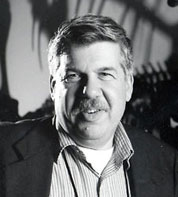 |
Stephen Jay Gould |
Darwin's theory entered into a deep crisis because of the laws of genetics discovered in the first quarter of the 20th century. Nevertheless, a group of scientists who were determined to remain loyal to Darwin endeavoured to come up with solutions. They came together in a meeting organised by the Geological Society of America in 1941. Geneticists such as G. Ledyard Stebbins and Theodosius Dobzhansky, zoologists such as Ernst Mayr and Julian Huxley, paleontologists such as George Gaylord Simpson and Glenn L. Jepsen, and mathematical geneticists such as Ronald Fisher and Sewall Right, after long discussions, finally agreed on ways to "patch up" Darwinism.
This cadre focused on the question of the origin of the advantageous variations that supposedly caused living organisms to evolve-an issue that Darwin himself was unable to explain but simply tried to side-step by depending on Lamarck. The idea was now "random mutations". They named this new theory "The Modern Synthetic Evolution Theory", which was formulated by adding the concept of mutation to Darwin's natural selection thesis. In a short time, this theory came to be known as "neo-Darwinism" and those who put forward the theory were called "neo-Darwinists".
The following decades were to become an era of desperate attempts to prove neo-Darwinism. It was already known that mutations-or "accidents" -that took place in the genes of living organisms were always harmful. Neo-Darwinists tried to establish a case for "advantageous mutation" by carrying out thousands of mutation experiments. All their attempts ended in complete failure.
They also tried to prove that the first living organisms could have originated by chance under primitive terrestrial conditions that the theory posited but the same failure attended these experiments too. Every experiment that sought to prove that life could be generated by chance failed. Probability calculations prove that not even a single protein, the building-blocks of life, could have originated by chance. And the cell-which supposedly emerged by chance under primitive and uncontrolled terrestrial conditions according to the evolutionists-could not be synthesised by even the most sophisticated laboratories of the 20th century.
Neo-Darwinism's architects: | ||
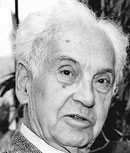 | 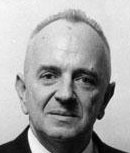 | 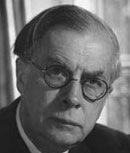 |
Ernst Mayr | Theodosius Dobzhansky | Julian Huxley |
Neo-Darwinist theory is also defeated by the fossil record. No "transitional forms", which were supposed to show the gradual evolution of living organisms from primitive to advanced species as the neo-Darwinist theory claimed, have ever been found anywhere in the world. At the same time, comparative anatomy revealed that species that were supposed to have evolved from one another had in fact very different anatomical features and that they could never have been ancestors or descendants of each other.
But neo-Darwinism was never a scientific theory anyway, but was an ideological dogma if not to say some sort of false religion. The Canadian philosopher of science Michael Ruse, a staunch evolutionist himself, confesses this in a speech he gave at a 1993 meeting:
And certainly, there's no doubt about it, that in the past, and I think also in the present, for many evolutionists, evolution has functioned as something with elements which are, let us say, akin to being a secular religion ... And it seems to me very clear that at some very basic level, evolution as a scientific theory makes a commitment to a kind of naturalism...12
This is why the champions of the theory of evolution still go on defending it in spite of all the evidence to the contrary. One thing they cannot agree on however is which of the different models proposed for the realisation of evolution is the "right" one. One of the most important of these models is the fantastic scenario known as "punctuated equilibrium".
Most of the scientists who believe in evolution accept the neo-Darwinist theory of slow, gradual evolution. In recent decades, however, a different model has been proposed. Called "punctuated equilibrium", this model maintains that living species came about not through a series of small changes, as Darwin had maintained, but by sudden, large ones.
The first vociferous defenders of this notion appeared at the beginning of the 1970s. Two American paleontologists, Niles Eldredge and Stephen Jay Gould, were well aware that the claims of the neo-Darwinist theory were absolutely refuted by the fossil record. Fossils proved that living organisms did not originate by gradual evolution, but appeared suddenly and fully-formed. Neo-Darwinists were living with the fond hope-they still do-that the lost transitional forms would one day be found. Realising that this hope was groundless, Eldredge and Gould were nevertheless unable to abandon their evolutionary dogma, so they put forward a new model: punctuated equilibrium. This is the claim that evolution did not take place as a result of minor variations but rather in sudden and great changes.
 |  |  | 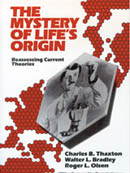 |  |
 |  |  |  |  |
Today, tens of thousands of scientists around the world, particularly in the USA and Europe, defy the theory of evolution and have published many books on the invalidity of the theory. Above are a few examples. | ||||
This model was nothing but a model for fantasies. For instance, European paleontologist O.H. Shindewolf, who led the way for Eldredge and Gould, claimed that the first bird came out of a reptile egg, as a "gross mutation", that is, as a result of a huge "accident" that took place in the genetic structure.14 According to the same theory, some land-dwelling animals could have turned into giant whales having undergone a sudden and comprehensive transformation. These claims, totally contradicting all the rules of genetics, biophysics, and biochemistry are as scientific as the fairy tales about frogs turning into princes! Nevertheless, being distressed by the crisis that the neo-Darwinist assertion was in, some evolutionist paleontologists embraced this theory, which had the distinction of being even more bizarre than neo-Darwinism itself.
The only purpose of this model was to provide an explanation of the gaps in the fossil-record that the neo-Darwinist model could not explain. However, it is hardly rational to attempt to explain the fossil gap in the evolution of birds with a claim that "a bird popped all of a sudden out of a reptile egg", because by the evolutionists' own admission, the evolution of a species to another species requires a great and advantageous change in genetic information.
However, no mutation whatsoever improves the genetic information or adds new information to it. Mutations only derange genetic information. Thus the "gross mutations" imagined by the punctuated equilibrium model would only cause "gross", that is "great", reductions and impairments in the genetic information.
Moreover, the model of "punctuated equilibrium" collapses from the very first step by its inability to address the question of the origin of life, which is also the question that refutes the neo-Darwinist model from the outset. Since not even a single protein can have originated by chance, the debate over whether organisms made up of trillions of those proteins have undergone a "punctuated" or "gradual" evolution is senseless.
In spite of this, the model that comes to mind when "evolution" is at issue today is still neo-Darwinism. In the chapters that follow, we will first examine two imaginary mechanisms of the neo-Darwinist model and then look at the fossil record to test this model. After that, we will dwell upon the question of the origin of life, which invalidates both the neo-Darwinist model and all other evolutionist models such as "evolution by leaps".
Before doing so, it may be useful to remind that the reality we will be confronting at every stage is that the evolutionary scenario is a fairy-tale, a great deceit that is totally at variance with the real world. It is a scenario that has been used to deceive the world for 140 years. Thanks to the latest scientific discoveries, its continued defence has at last become impossible.
Darwin's Racism | |
One of the most important yet least-known aspects of Darwin is his racism: 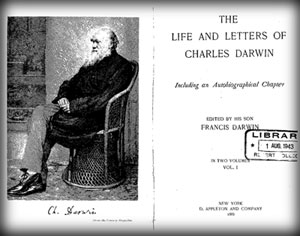 Darwin regarded white Europeans as more "advanced" than other human races. While Darwin presumed that man evolved from ape-like creatures, he surmised that some races developed more than others and that the latter still bore simian features. In his book, The Descent of Man, which he published after The Origin of Species, he boldly commented on "the greater differences between men of distinct races".1 In his book, Darwin held blacks and Australian Aborigines to be equal to gorillas and then inferred that these would be "done away with" by the "civilised races" in time. He said: At some future period, not very distant as measured by centuries, the civilized races of man will almost certainly exterminate and replace the savage races throughout the world. At the same time the anthropomorphous apes... will no doubt be exterminated. The break between man and his nearest allies will then be wider, for it will intervene in a more civilised state, as we may hope, even than the Caucasian, and some ape as low as baboon, instead of as now between the negro or Australian and the gorilla.2 Darwin's nonsensical ideas were not only theorised, but also brought into a position where they provided the most important "scientific ground" for racism. Supposing that living beings evolved in the struggle for life, Darwinism was even adapted to the social sciences, and turned into a conception that came to be called "Social Darwinism". | |
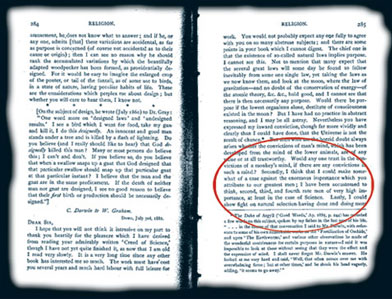 | 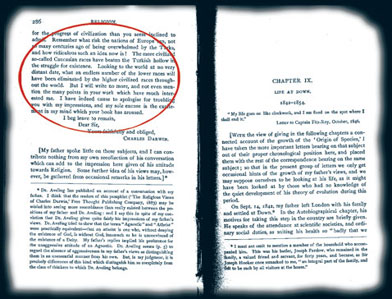 |
Social Darwinism contends that existing human races are located at different rungs of the "evolutionary ladder", that the European races were the most "advanced" of all, and that many other races still bear "simian" features.
1- Benjamin Farrington, What Darwin Really Said. London: Sphere Books, 1971, pp. 54-56 2- Charles Darwin, The Descent of Man, 2nd ed., New York: A.L. Burt Co., 1874, p. 178 | |
7. Dan Graves, Science of Faith: Forty-Eight Biographies of Historic Scientists and Their Christian Faith, Grand Rapids, MI, Kregel Resources![]()
8. Science, Philosophy, And Religion: A Symposium, 1941, CH.13![]()
9. J.De Vries, Essential of Physical Science, Wm.B.Eerdmans Pub.Co., Grand Rapids, SD 1958, s. 15![]()
10. H. S. Lipson, "A Physicist's View of Darwin's Theory", Evolution Trends in Plants, Cilt 2, No. 1, 1988, s. 6![]()
11. Darwin Lamarck'tan tümüyle bağımsız bir teori ortaya attığı iddiasıyla ortaya çıkmış, ancak giderek zaman içinde Lamarck'ın iddialarına dayanır hale gelmiştir. Türlerin Kökeni'nin özellikle 6. ve son baskısı, Lamarck'tan esinlenen birçok "kazanılmış özelliklerin akratılması" örneğiyle doludur. Bkz. Benjamin Farrington, What Darwin Really Said, New York: Schocken Books, 1966, s. 64![]()
12. Julian Huxley & Jacob Bronowski, Growth of Ideas, Prentice Hall, Inc. Englewood Cliff, 1986, s. 99![]()
13. Michael Ruse, "Nonliteralist Antievolution", AAAS Symposium: "The New Antievolutionism," February 13, 1993, Boston, MA![]()
14. Stephen M. Stanley, Macroevolution: Pattern and Process, San Francisco: W. H. Freeman and Co. 1979, s. 35, 159![]()